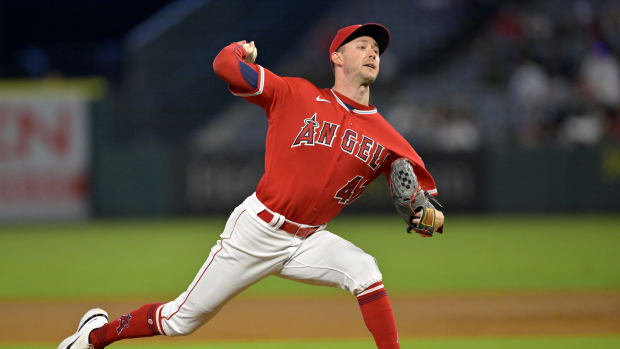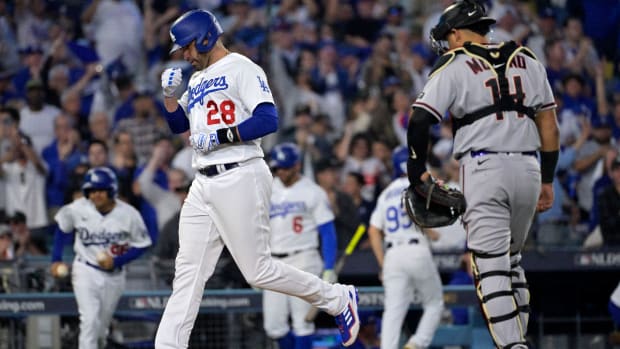
Relief Pitcher Evaluator
The following data is a sample of what will be available in the 2009 Bill James Handbook from Baseball Info Solutions, published by ACTA Sports.
The modern bullpen is still evolving rapidly. I would put it this way: If you compare a typical bullpen of 1938 to a bullpen of 1948, or compare 1948 to 1958, or 1958 to 1968, etc. until today, that in every ten year period there have been obvious changes in the way that bullpens have been staffed and used -- but that never before have those changes been as large as in the last ten years.
These rapid changes are leaving the stat books in their wake. We evaluate relievers by ERA, but a modern reliever can do a lot of damage with runs charged to somebody else. In the 1950s and 60s we developed the concept of the "Save", and since then have added the derivative concepts of "Blown Saves" and "Holds", but the modern bullpen contains one pitcher who is assigned to save the game and six or seven whose job is something else entirely -- something not measured by Saves or anything in their line.
The modern bullpen is staffed by two or three lefties whose job it is to get out lefties, by an eighth-inning guy whose job it is to be a bridge to the closer, by a seventh-inning guy, and by two or three pudknockers whose job is to pitch in where they can. You can have a lot of different guys, doing a lot of different jobs, whose records all look pretty much the same.
We're trying to stretch the record book here to cover more of the modern bullpen. The tables below have 21 categories, not counting the pitcher's name or his team, and rank the best relief pitcher from each team. These are the 21 categories: (All statistics through Sept. 21.)
Relief Games: No explanation needed
Early Entry: A count of the number of times the reliever entered the game in the sixth inning or earlier. 19% of major league relief appearances are in the sixth inning or earlier, with the leaders in early entries having numbers in the low 20s.
Consecutive Days: A count of how many times the pitcher was used after having pitched on the previous day or (in a few cases) in an earlier game on the same day. This varies with managers. Some managers avoid using relievers on consecutive days; others don't mind.
Long: Anything more than 25 pitches. Whoever leads a team in early entries will also generally lead the team in Long Outings. 20% of relief appearances are Long Outings.
Inherited Runners #: A count of the number of runners on base when the reliever entered the fray.
Inherited Runners Scored: No explanation needed.
Percentage: 31% of inherited runners score.
Easy Saves: Any Save Opportunity in which the reliever enters the game with three outs or less remaining, and the first batter he faces does not represent the potential tying or winning run. Relievers are credited with Saves in 88% of their Easy Save opportunities, and 57% of all saves are Easy Saves.
Easy Save Opportunities: The number after the dash is the number of Opportunities the pitcher has been given for an Easy Save. The number before the dash is the number of actual Easy Saves that he was credited with.
Regular Saves: Any save which does not meet the definition either of an Easy Save or a Tough Save. Major league relievers are credited with Saves in 59% of "Regular" Save Opportunities, and "Regular" Saves account for 38% of all major league saves.
Regular Save Opportunities: No explanation needed.
Tough Saves: One in which the reliever enters with the potential tying or winning run on base. Relievers are credited with Saves on only 21% of "Tough Save" Opportunities, and only 5% of Saves are Tough Saves.
Tough Saves Opportunities: No explanation needed.
Clean Outing: A game in which the reliever is not charged with a run (earned or otherwise) AND does not allow an inherited runner to score. 64% of relief appearances are Clean Outings.
BS Win: A Blown Save/Win is a "win" credited to a reliever who has blown a save opportunity. Suppose that the starter pitches 7 1/3 innings and leaves with a 3-1 lead, runner on base. The reliever gives up a home run, tying the game 3-3, but the reliever's team scores in their next at bat, making the reliever who has given up the home run the "winning" pitcher. That's a BS Win -- a Blown Save Win.
Saves: Don't make me explain the Save Rule. I know people.
Holds: A "Hold" is credited to any reliever who inherits a Save Situation, records at least one out, and passes along the Save Situation to the next reliever.
Save Opportunities: The sum of Saves and Blown Saves.
Save/Hold Percentage: The sum of Saves and Holds, divided by the sum of Saves, Holds and Blown Saves.
For several years we figured "Save Percentage", which is simply Saves divided by Save Opportunities, and this stat has some currency in the game. But the Save Percentage severely discriminates against middle relievers, who have no real chance to be credited with the Save, since they will be taken out of the game and replaced by the Closer even if they throw 110 miles an hour and strike out everybody they see. Middle relievers typically have Save Percentages of zero, even if they pitch well. The Save/Hold Percentage is a much more realistic evaluation of a pitcher's success in Save situations.
Opposition OPS: The OPS of the hitters facing the pitcher.
ERA: No explanation necessary.
NOTE: All stats are through September 2. The charts show the top reliever on each team as determined by Bill James and Steve Moyer, president of Baseball Info Solutions, using a combination of a statistical ranking system and a subjective review.
Usage
Inherited Runners
Saves
Relief Results



































